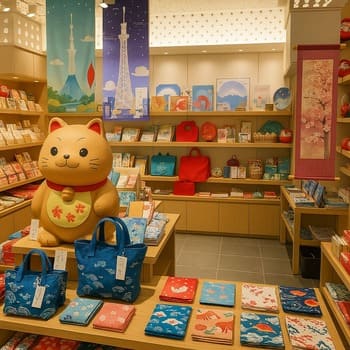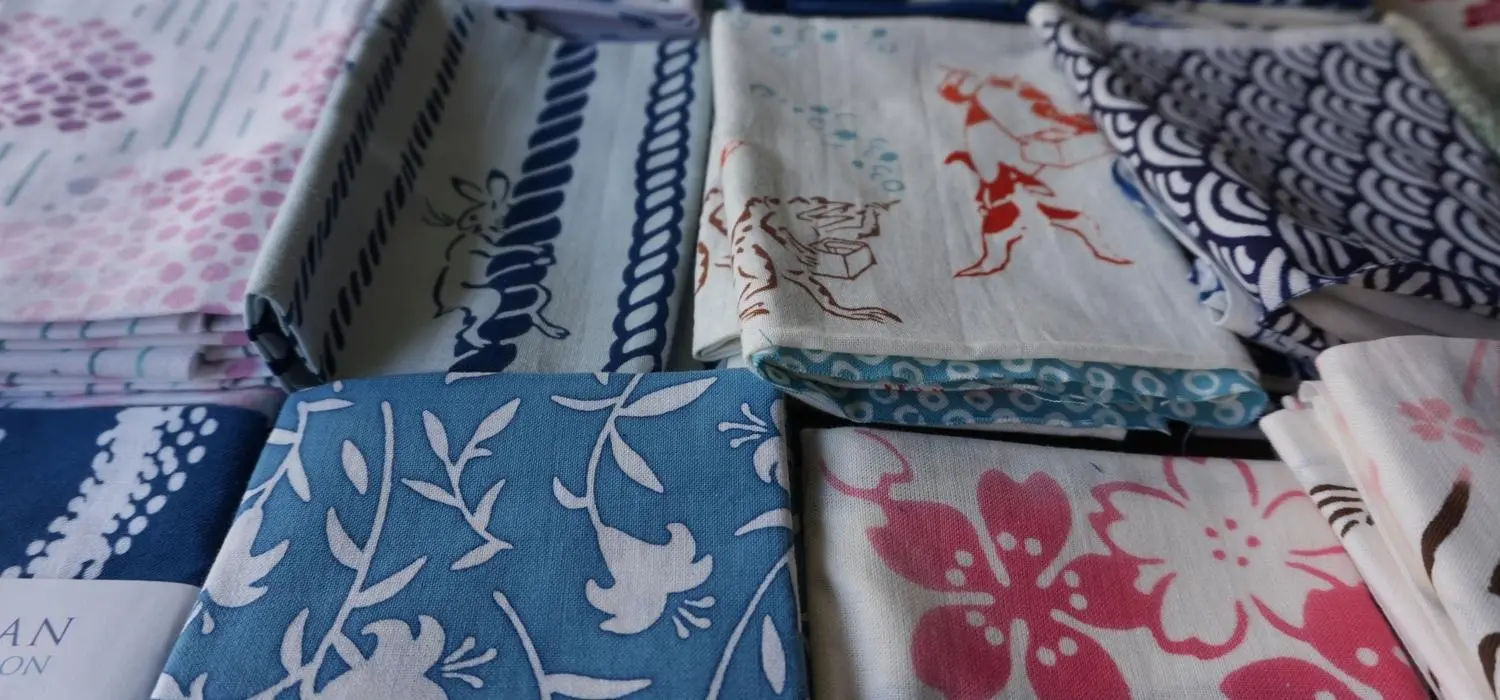You know those supporting actors who show up in countless movies—never the star, but somehow always essential? Someone like Stanley Tucci.
That’s what tenugui reminds me of.
In Japan, tenugui has been part of daily life for over a thousand years. Of course, you shouldn’t expect too much—it’s just a piece of cloth. But can something with no real features survive that long? Obviously not.
Tenugui is practical, versatile, and quietly brilliant. In this article, I’ll show you why this humble cloth has endured for centuries—and why it still makes sense today.
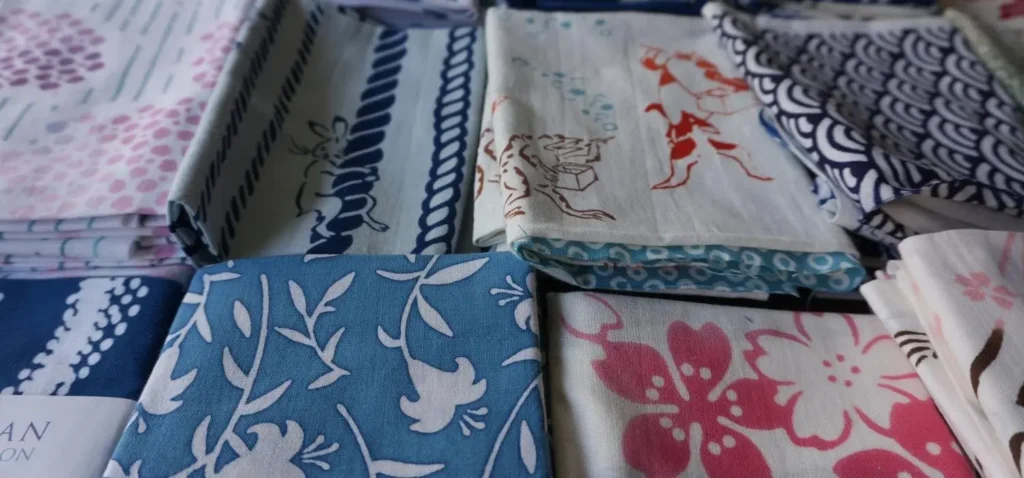
1. What is a Tenugui?
A tenugui is a thin, narrow piece of cloth, usually 11 to 14 inches wide (about 28–35 cm) and 33 to 39 inches long (about 85–100 cm). Traditionally dyed with Japanese techniques, many feature beautiful patterns and motifs.
Its main role is to absorb water and sweat. You can use it as a kitchen cloth, or wrap it around your neck or head to wipe away perspiration. Most tenugui are made of cotton, though hemp or silk versions exist but are rare.
One of its most distinctive features is that the edges are left unsewn. This prevents water from collecting at the seams, making the cloth quick-drying, hygienic, and practical. And because there are no seams, the fabric can even be torn lengthwise—in the past, people sometimes used a strip of torn tenugui as an emergency strap when the thong of their wooden sandals (geta) broke.
Of course, this unfinished edge has a drawback: after the first washes, the fabric frays. It doesn’t look great, and trimming the loose threads each time can feel tedious. But eventually the cloth settles, and the fraying stops.
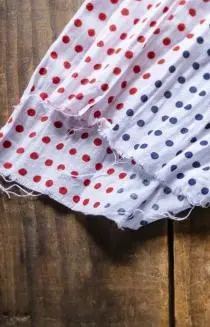
Recently, some inexpensive tenugui have stitched edges to prevent fraying. At first glance, this seems like the “perfect version”—finally a complete tenugui after a thousand years!
But wait—if it were that easy, why didn’t anyone think of it earlier? The reason is simple: stitching not only ruins the traditional look, it also takes away the key advantage of fast drying.
And more than that—part of the joy of using a tenugui is in shaping it yourself. By trimming the frayed threads little by little, you slowly “finish” the cloth over time. Like a pair of raw jeans or a leather wallet, it develops character and feels more personal the longer you use it.
So if you want the full experience, skip the cheap stitched versions and choose the authentic frayed edge. That’s the tenugui that has survived for over a thousand years.
2. About Dyeing Tenugui
Most tenugui feature patterns, which are typically created through dyeing. However, inexpensive ones are often surface-printed with pigments instead.
There are several differences between dyeing and pigment printing. Since tenugui is a relatively thin fabric, when dyed, the pattern seeps through to the reverse side, creating a visually appealing effect. In contrast, pigment-printed tenugui have a whitish reverse side because the ink does not fully penetrate the fabric. By checking the reverse side, you can easily distinguish between a dyed tenugui and a printed one.
Additionally, dyed tenugui are softer to the touch, making them more comfortable against the skin. Printed versions, on the other hand, can reproduce intricate patterns at a lower cost but tend to feel slightly stiffer in texture.
I’m not saying the important things are always hidden on the reverse side, but when buying a tenugui, do check the back—it tells you a lot about the fabric’s quality and how it was made.
Supplement (For fabric nerds or anyone with too much time):
There are two main types of dyeing techniques used for tenugui: Chusen and Nassen.
Each method has its own unique characteristics, as described below.
Chusen
Multiple sheets of fabric are stacked and dyed simultaneously, allowing the pattern to be fully visible on both sides of the fabric. However, this technique causes slight bleeding of the dye, resulting in a blurred effect. (This blurring is not necessarily a flaw, but in terms of pattern precision, it is less accurate compared to Nassen.)
Nassen
This method primarily involves hand-dyeing each piece using a stencil, though machine dyeing is sometimes used. Since the dye is applied to the surface of the fabric, it does not penetrate through to the reverse side as effectively as Chusen. However, Nassen excels in achieving sharp, intricate patterns with high precision.
Additionally, Nassen cannot produce color gradations, whereas Chusen can. If you are interested in traditional dyeing techniques, exploring these differences in more detail could be quite fascinating.
3. History of Tenugui
The origin of tenugui can be traced back to the Nara period (700s A.D.). However, since cotton was expensive at the time, tenugui are believed to have remained rare until the Muromachi period (14th–16th centuries), when cotton became more widely available to the general public.
By the way, you might be wondering: if cotton wasn’t available, what did ordinary people wear instead?
The answer is hemp and other plant-based fabrics.
“Let them eat cake.”
In Japanese, “te” means hand, and “nugui” means to wipe. The original purpose of tenugui was to serve as a cloth for wiping hands.
Over time, tenugui has been used not only for wiping hands, faces, and bodies but also for various other purposes.
4. Tenugui in the Modern Age
With the spread of Western-style clothing and handkerchiefs, tenugui has unfortunately fallen out of common use among the general public. Until a few years ago, it was mostly seen being used by the elderly or wrapped around the head during festivals.
In recent years, however, there has been a resurgence of interest in tenugui, and it is being reevaluated as a fashionable and eco-friendly item. Once considered old-fashioned, tenugui has been shedding that image in recent years.
Although tenugui had once lost its place in daily life, shifting trends are leading Japanese people to recognize its value once again as a traditional yet practical tool.
So yes, tenugui is basically the Robert Downey Jr. of the fabric world. Mostly, according to me.
5. Basic Uses of Tenugui
5-1. Towel or Handkerchief
A tenugui with a pleasant texture can be used in various ways, such as a hand towel for drying hands, a face towel after washing, or a body towel after bathing. It can also be draped around the neck to wipe away sweat.
In the summer, simply wearing it around your neck adds a touch of style while keeping you cool.
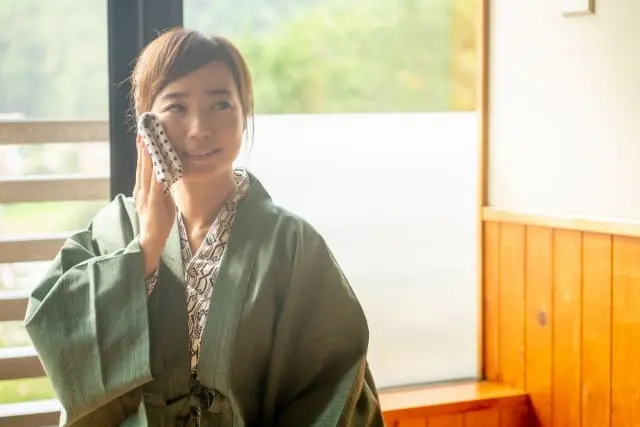
5-2. Body Towel for Bath or Sauna
A tenugui is useful as a body towel in bathrooms, saunas, hot springs, and public bathhouses. Its gentle, non-irritating texture makes it a great choice even for sensitive skin.
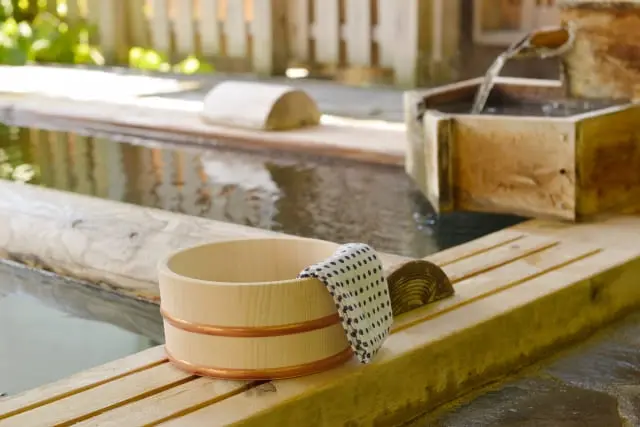
5-3. Hand Towels, Kitchen Wipes, and Kitchen Cloths
A tenugui can be used as a substitute for a kitchen towel or cloth to dry dishes after washing or wipe away dirt around the table and kitchen.
It also works well as a hand towel, adding a stylish touch when offering it to guests. For a more convenient size, try cutting it in half to make a perfectly sized hand towel.
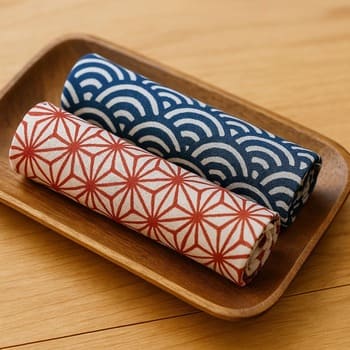
5-4. Bandana for the Head
Wrap a tenugui around your head or neck in the summer to protect yourself from sunburn and heat.
In Japan, there is a long-standing tradition of wearing tenugui at festivals or while cleaning. In addition to its cultural significance, it is also practical for shielding against sunlight and dust.
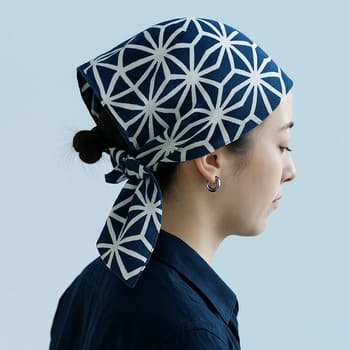
6. Creative Uses of Tenugui
There are various ways to use tenugui, and their usage depends on personal creativity. Here, we introduce three creative applications of tenugui.
I have also included links to reference videos for each method, so if any of them interest you, feel free to check them out.
(The explanations in the videos are in Japanese, but you can understand the content just by watching the demonstrations.)
6-1. Tissue Box Cover
A plain or mismatched tissue box can be effortlessly transformed into a warm and stylish accent by wrapping it in a tenugui.
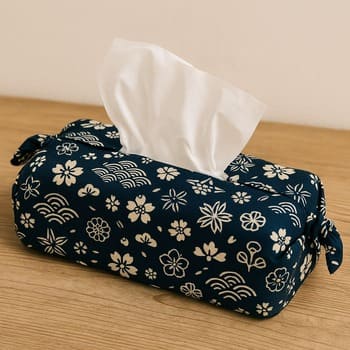
How-To Video (YouTube)
Video courtesy of Mizunosomeya Official Channel
6-2. Wine Bottle Wrapping
You may choose to give a bottle of wine as a thank-you gift to a close friend or someone who has helped you. While store-bought wrapping is convenient, taking a little extra time to wrap the bottle in a beautifully patterned tenugui will make your gift even more special and memorable.
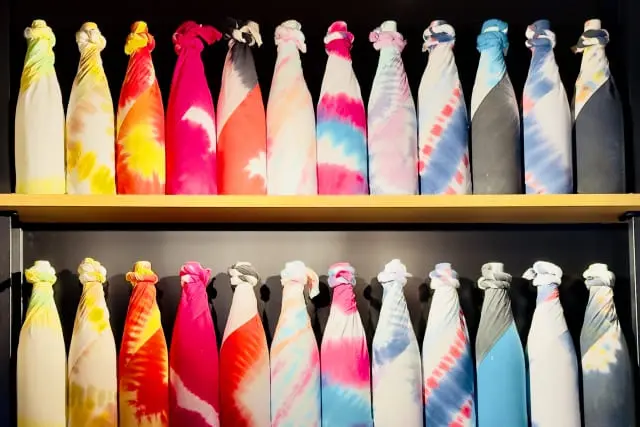
How-To Video (YouTube)
Video courtesy of Otsutsumi-kenkyuusyo Official Channel
6-3. Interior Decoration (Tapestry)
If you have a favorite pattern, using tenugui as a tapestry is a great way to add a touch of Japanese style to your interior.
(For easier display, consider using a special hanging tool, which is sold separately.)
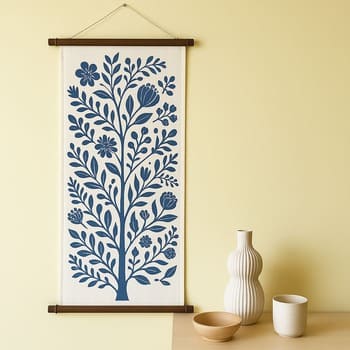
Essential Skills
Tenugui can be used in many ways, but one essential skill applies to almost all of them: the square knot, known in Japan as ma-musubi.
This knot is used in nearly every furoshiki wrapping technique, so it’s worth mastering.
It’s incredibly simple—you can learn it effortlessly just by watching the video.
How-To Video (YouTube)
Video courtesy of Furoshiki specialty store MUSUBI Official Channel
<Caption>
- When wrapping bento boxes or gifts, are you tying the ma-musubi correctly? (0:03)
- Correct ma-musubi (0:12)
- The knot is parallel to the body. (0:26)
- Incorrect knot (0:30)
- The knot is perpendicular to the body. (0:41)
- Shoelaces are also less likely to come undone when tied using a ma-musubi. (0:52)
Left: ma-musubi
Right: Not ma-musubi
7. Where to Buy a Tenugui
Here are some places where you can find high-quality tenugui.
We have excluded hundred-yen stores and discount shops, as their tenugui are inexpensive but often of lower quality, making them less recommended.
7-1. Gofukuya
Gofukuya are stores that sell various kimono-related items, such as kimono, obi, and geta. Most of them are located in Nihonbashi (Tokyo) and Kyoto.
You can find tenugui here for about $10 to $20. However, these stores may feel a bit formal, making it difficult to enter casually.
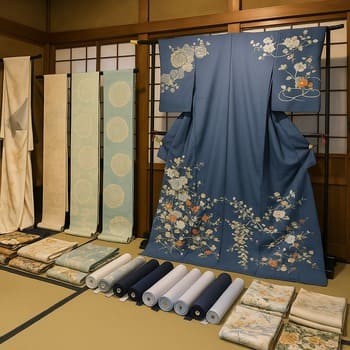
7-2. Department Stores
Some department stores have branches of the Gofukuya mentioned above.
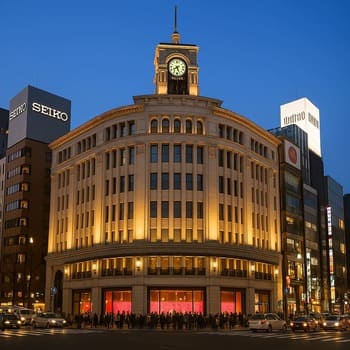
7-3. Souvenir Shops
Some souvenir shops may carry tenugui. While the selection may be limited, if you find one you like, it’s a great opportunity to pick it up.
